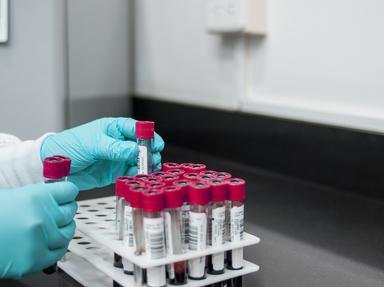Quiz Answer Key and Fun Facts
1. The history of the chemical benzene is rather interesting in that it proved devilishly difficult to ascertain its structure. What was the name of the scientist who came up with the first plausible arrangement of benzene?
2. Benzene, also known as benzol, is a chemical that is known as a planar hexagonal ring and it consists of two different types of atom. Apart from carbon, which of the following elements is a constituent of benzene?
3. Benzene is more stable than what chemists first believed as it has a cloud of delocalised electrons. This cloud of electrons is formed by overlapping p-orbitals and is known by what Greek letter?
4. Benzene, instead of undergoing electrophilic addition reactions that would reduce its stability, is involved in electrophilic substitution reactions. One product of a substitution reaction involving benzene is 2,4,6-trinitromethylbenzene. By what name is this molecule more commonly known?
5. When a molecule of benzene partakes in an electrophilic substitution reaction a derivative of formula -C6H5 exists. Therefore, in a monosubstituted molecule of benzene, what is the name given to -C6H5?
6. Due to benzene having a cloud of delocalised electrons, the molecule is more stable. This stability generated by delocalisation is known as what type of energy?
7. An example of the electrophilic substitution reactions of benzene is halogenation. Which of the following chemical elements could be the substitute of the hydrogen that is lost during the reaction?
8. The molecule benzene can undergo a chemical reaction known as nitration. To carry out this reaction there is need for the presence of two concentrated acids. Nitric acid is one, but, what is the other?
9. During the nitration of benzene, the two acids involved react to form a cation. The formula of this positive ion is NO2+, but, what is the name of this?
10. Due to its cyclic structure with a surrounding cloud of delocalised electrons, benzene is accurately described by which of the following chemical adjectives?
Source: Author
jonnowales
This quiz was reviewed by FunTrivia editor
crisw before going online.
Any errors found in FunTrivia content are routinely corrected through our feedback system.

